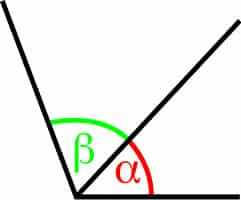 The Latin word consecūtu derives from consĕqui , which can be translated as “go after one” according to the dictionary of the Royal Spanish Academy ( RAE ). The concept is used to name what happens or appears after something else immediately or without interruptions .
The Latin word consecūtu derives from consĕqui , which can be translated as “go after one” according to the dictionary of the Royal Spanish Academy ( RAE ). The concept is used to name what happens or appears after something else immediately or without interruptions .
For example: “The Swiss tennis player won three consecutive titles” , “For the second consecutive day the train service will not operate due to a workers' strike” , “I no longer have sufficient physical capacity to play two consecutive matches” .
The consecutive thing is carried out without there being a great temporal distance or without another event of the same type taking place in the middle . Suppose that the calendar of an international motorsports championship includes a race that takes place in January in Australia , another that takes place in February in Spain and a third that takes place in March in Egypt . The races of Australia and Spain can be said to be consecutive, as are those of Spain and Egypt . On the other hand, the races in Australia and Egypt are not consecutive since, between them, the race in Spain takes place.
On the other hand, if an employee misses work from Monday to Thursday inclusive of the same week, it can be said that he did not go to work for four consecutive days. If, on the other hand, he is absent on Monday, attends on Tuesday and is absent again on Wednesday, the absences are not consecutive.
In the field of geometry , finally, consecutive angles (also known as contiguous angles ) are those that have a common side and also have the same vertex. Adjacent angles and conjugate angles , therefore, are also consecutive angles.
The concept of vertex is essential in this context, and it is important to define it clearly to avoid confusing it with other types of points . First of all, we can say that the point is a fundamental entity of geometry, along with the plane and the line; They fall into the special category of primary concepts , since we can only describe them if we relate them to other similar elements.
 The point , and therefore the vertex, has no dimension: it does not have area, length or volume, among other dimensional angles. Its existence makes sense when it serves as a reference to locate ourselves in a space of two or more dimensions, or if it is grouped with another or others to form one-dimensional, two-dimensional or three-dimensional geometric figures, such as segments, squares or spheres.
The point , and therefore the vertex, has no dimension: it does not have area, length or volume, among other dimensional angles. Its existence makes sense when it serves as a reference to locate ourselves in a space of two or more dimensions, or if it is grouped with another or others to form one-dimensional, two-dimensional or three-dimensional geometric figures, such as segments, squares or spheres.
The elements that are joined by a vertex, precisely, are one-dimensional: vectors, rays, curves, lines, segments, etc. In this way, when we talk about consecutive angles we must visualize three sides (which can be represented with one-dimensional figures like those presented above) connected by the same point. Note that it is possible to define many consecutive angles, which form a chain in which several sides starting from the same vertex can be seen.
The adjacent angles meet these conditions, but they also have the two different sides as opposite rays , that is, the side they have in common and two others start from the same vertex, which together add up to a flat angle (180°). This last characteristic makes them supplementary angles , for which one of the two must necessarily be less than 180°.
The case of conjugate angles , others that are considered consecutive, is similar, since the two must add up to 360° to enter this category. It is important to note that here the two sides are common, and there is no third: the figure formed by relating two conjugate angles is a circle.
